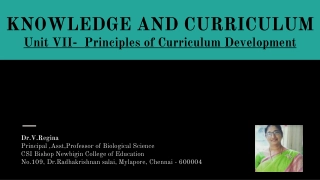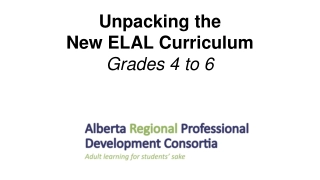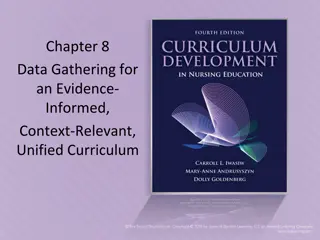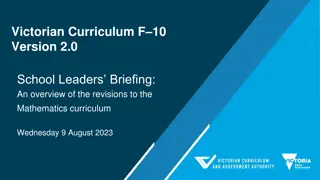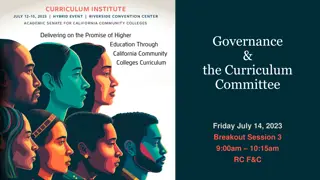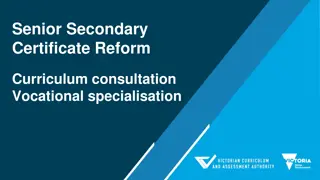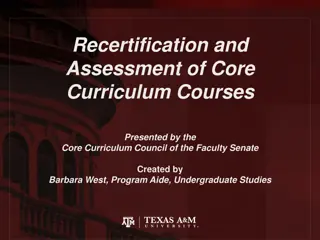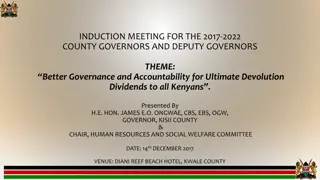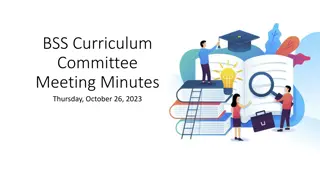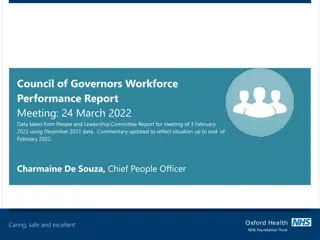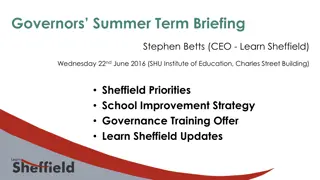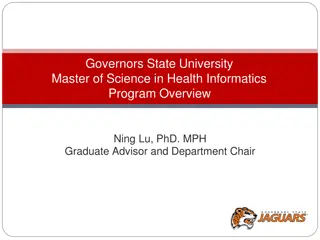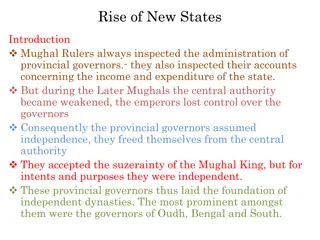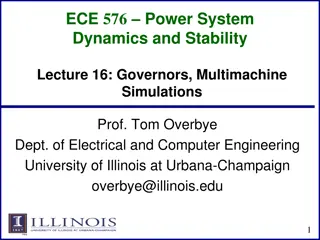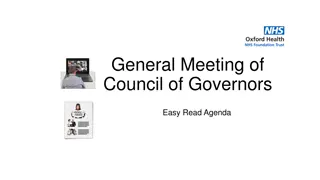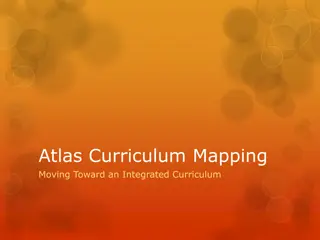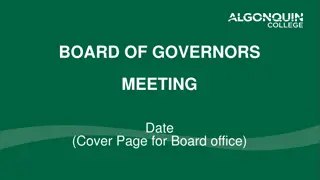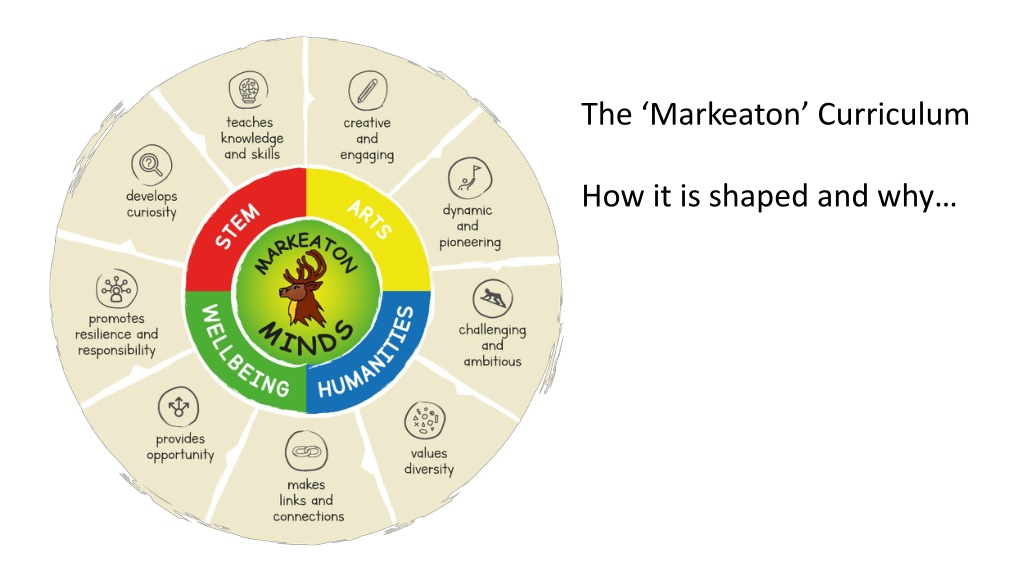
Understanding the Shaping of the Markeaton Curriculum
Explore how the Markeaton Curriculum is shaped, including its key components such as curriculum families, curriculum intent, and thematic approaches to teaching subjects like art. The review process, curriculum development, and focus on skill progression are highlighted to provide insights into the educational framework at Markeaton.
Download Presentation

Please find below an Image/Link to download the presentation.
The content on the website is provided AS IS for your information and personal use only. It may not be sold, licensed, or shared on other websites without obtaining consent from the author. If you encounter any issues during the download, it is possible that the publisher has removed the file from their server.
You are allowed to download the files provided on this website for personal or commercial use, subject to the condition that they are used lawfully. All files are the property of their respective owners.
The content on the website is provided AS IS for your information and personal use only. It may not be sold, licensed, or shared on other websites without obtaining consent from the author.
E N D
Presentation Transcript
The Markeaton Curriculum How it is shaped and why
The graphic on the previous slide is an illustration of our curriculum at Markeaton. In the centre we see our school, the children, our focus. We see them surrounded by our MINDS skills. From here we see 4 sections, representing the 4 curriculum families. On the outside we see our ambitions for the curriculum we provide at Markeaton. This year, we have been undergoing a curriculum review but the principles driving our curriculum are still the things that we have always seen as essential to the Markeaton Curriculum we provide for our pupils.
Curriculum Families Science Design Technology Maths Computing Art Music Writing Reading Phonics These have been in place for a number of years but due to a variety of reasons, never really showed their potential until this year. They are still in their infancy but have already demonstrated their importance in the development of our curriculum. 1. They involve members of the teaching staff from all departments to ensure a whole school eye on a subject, its development and coverage. 2. They ensure professional dialogue around curriculum subjects. 3. They help to support less experienced curriculum leads to lead their subject effectively. 4. They help prevent pockets of good practise pooling in certain departments. History Geography RE MFL PE PSHE and Wellbeing Forest Schools SEND
Curriculum intent. Our curriculum is being reviewed. As part of this review, we are looking at the subjects in a different way. Previously, we had adopted our curriculum from Focus Education and it was split into what we call Small Steps . However, these felt more like a set of activities for children to undertake than a progressive map for the development of and revisiting of skills in subjects. To address this, we have been looking at themes that run through each subject and how these themes are planned for, in each department, to ensure the progression of skills. Let s take art as an example. How are we going to make our children Artists? Art and Design National Curriculum KS1 Children will be taught: To use a range of materials creatively to design and make products. To use drawing, painting and sculpture to develop and and share their ideas, experiences and imagination To develop a wide range of art and design techniques in using colour, pattern, texture, line, shape, form and space About the work of a range of artists, craft makers and designers, describing the differences and similarities between different practices and disciplines, and making links to their own work.
We want to continue to work in topics over the terms. Each department has it s own topics - they have a science, history or geography bias. This allows us to create learning that is cohesive to the children and ensure they build schemas of knowledge over the term, to create one big picture where learning from all the subjects interweaves. It was important that we had an overview of the main art and design product and the artists that were to be studied and used as inspiration for the children s own work to ensure coverage and not cross over. You can see the Making focus for each although there are other processes involved. Making is one of the major themes for art. It is studied in great depth in the topic outlined above but will also feature in other topics (e.g. The printed landscape in Knock, Knock also includes collage techniques.) These Making elements are revisited across the year groups but with a progressive expectation as the children travel through Markeaton.
We have chosen 4 points to measure learning at: end of EYFS, end of Y2, end of Y4 and end of Y6. These Making expectations are for the end of Y2 and will be built upon in year 3/4 and then year 5/6 but will remain the elements within the theme of Making .
As well as the theme, Making we have also decided on: Generating ideas Evaluating ideas (Which run regardless of the Making theme.) These are skills that are revisited every term. (We don t just want to fill knowledge gaps if we are saying our curriculum is about skills) Also
primary / secondary colours hatching Block colours smudging Pattern blending Repeating pattern scumbling shape dark print light collage zoom roll / rolling focus rub / rubbing scale stamp / stamping sketch Communication and Vocabulary Acrylic paint observational Layers tone Motif texture perspective effect Lit Drawing an alarm machine for Grandma s house. Geog - Painting pics of nearby buildings and shops RE drawing wedding cakes Hist collage of old and new items in a house Cross curricular Art opportunities This bit is still being made We also want to show progression in the vocabulary we are using with the children and ensure that words are introduced at the right times and then built upon over subsequent topics and years. Art isn t just for a couple of weeks each topic. We want to make sure there are other artistic opportunities running throughout the topic to help bring learning to life and establish cross curricular links.
These curriculum maps will look similar across all subjects. They run on the same principles. They will all have themes that may break down into elements or run throughout. They will all have vocabulary and cross curricular sections. But that is not all we do at Markeaton! All of our learning also goes through our Markeaton MINDS lenses. (This graphic is not quite the finished article yet.) At Markeaton as well as wanting children to be increasingly excellent artists / historians / mathematicians and so on, we also want them to be increasingly excellent people citizens of the future. Our Markeaton MINDS are designed to help achieve this.
Each lesson has subject content and learning but it will also encourage the children to use one, some or all of the Markeaton MINDS skills too This is planned for by teachers and is made clear to pupils alongside the subject content they are going to be studying in the session. Let s see it in the planning and on a SMART sheet example
Planned for Shared with pupils (Plenaries often have opportunities for the children to consider how well they used their MINDS skills as well as showcase any knowledge and learning they have acquired.)
A And hopefully, that is where things come full circle because the aspirations we have for our curriculum are also the aspirations we have for our pupils at Markeaton. We seek to provide a curriculum that follows the principles outlined on that first graphic I shared but equally, we seek to inspire children to grow into, value and uphold the same principles as citizens of the future. A person who is person who has A A person who has person who is A A person who is Our curriculum content and Markeaton MINDS are the ways we hope to achieve this. person who has A person who has and uses A person who A person who


